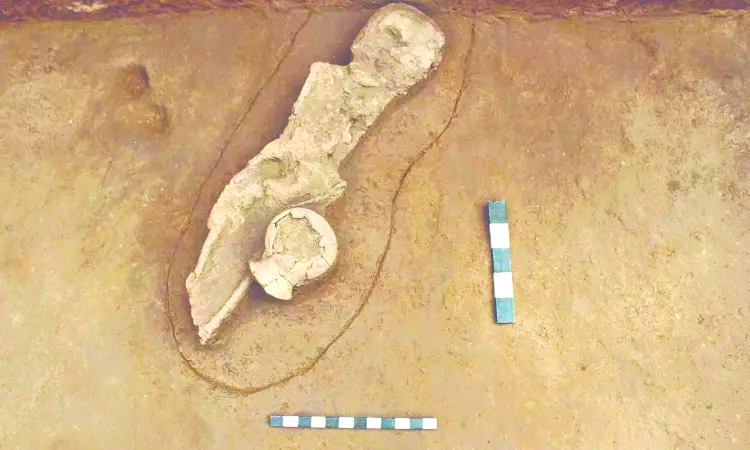
Professors and students from the department of Ancient History and Archaeology, University of Madras have found a neolithic child burial site at Chettimedu Pathur in Chengalpattu, Tamil Nadu. The team heading the excavation reported that it rare to find burials from the Neolithic period which was between 5000-1500 BCE. The excavation, which began on February 5, led to the discovery of the burial site which featured a child with a pot beside it.
According to preliminary findings, the pot dates back to the Neolithic period and the age of the child was between 9 and 11 years. The child’s head is placed at the north and the body points to the south while the face has been turned to the west. Shreds of burnished red ware, burnished grey ware and red ware with an elongated neck and wide mouth belonging to the same period were also discovered.
“This is the first time such a child burial has been identified in Tamil Nadu. It is believed to be from 5000 BC. The child could be aged between 9 to 11, as the mandibular deciduous first molar tooth has not started to shed. A small habitation mound with multi-cultural phases was discovered by Jinu Koshy, who is presently the excavation in-charge and also professor in the department, about three years ago. Following this, we got permission from the Archaeological Survey of India to study the site and train second year MA students,” said J Soundararajan, associate professor and in-charge of department of ancient history and archaeology.
The excavation site has four trenches (CTM 1, 2, 3 and 4) in order to understand the cultural sequence of the site. Excavation has been completed in two of the trenches and two remain. Soundararajan added, “Based on the preliminary analysis, the material evidence and layers could be divided into five cultural periods – complementary period, Chola period, Sangam period, Iron Age and Neolithic period.”















